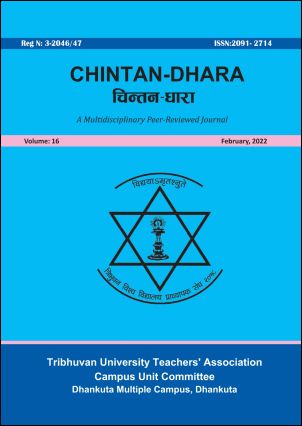Plant Protection Measures of Crops: Prospects and Threats in Nepal
DOI:
https://doi.org/10.3126/cd.v16i1.48160Keywords:
Adoption, plant protection measures, improved seeds, pesticides, insecticidesAbstract
The study focuses on the possibilities and threats of using plant protection measures on crop production particularly in the eastern hills of Nepal. Relevant data were collected from the interview, key informant survey and field observation. For this, 30 percent (180hhs) sample households were selected from three altitude belts such as upper, middle and lower, ranging from 300 to 2,250 masl along the Koshi-highway. It has a wide range of climates, ranging from sub-tropical to alpine with monsoon precipitation in the summer three and half months and therefore diversity in flora and fauna, and people. Similarly, secondary data were gathered from previous research journals, dissertations and official records.
This paper showed that plant protection measures are known as important technology for protection and promotion of both cash and cereal crops in this area. More than 72 percent (130hhs) farmers have been using this technology as a new innovation. The attraction of farmers towards traditional measures seems to be gradually increasing however; the newly developed measures are accepted as a necessary evil. The maximum effort of farmers seems to reduce the use of newly developed measures as far as possible. Thus, the use of traditional measures is as the wishes of the farmers, while the adoption of newly developed protection measures is found to be unintentional. But there is no possibility of reducing the use of these measures even if farmers want to at present. Lacks of timely identification of crop disease, negative impact of chemical pesticides on human health, lack of proper knowledge to use such technologies and inadequate supply of such technologies on time are major identified problems associated with this topic at present situation.




